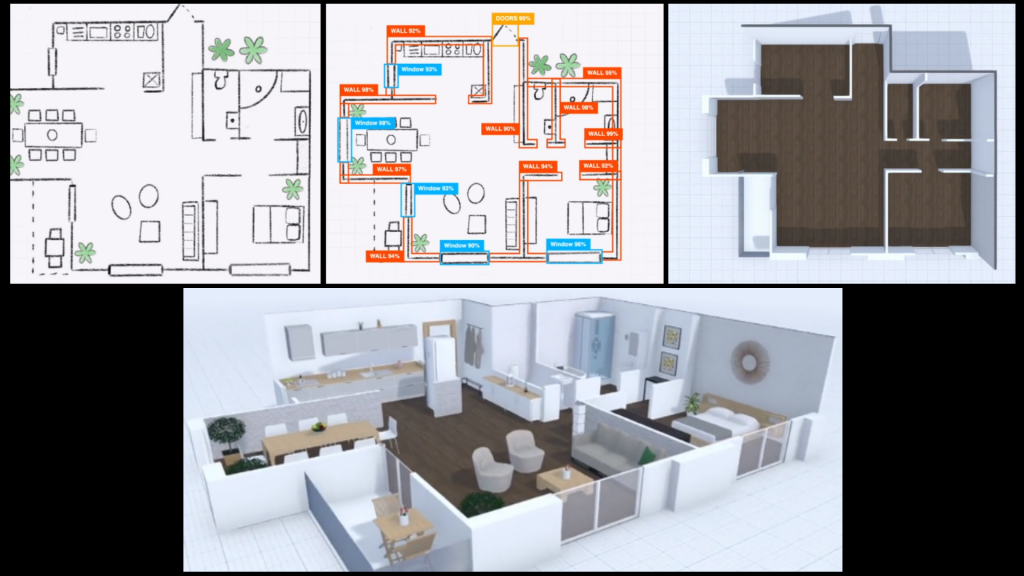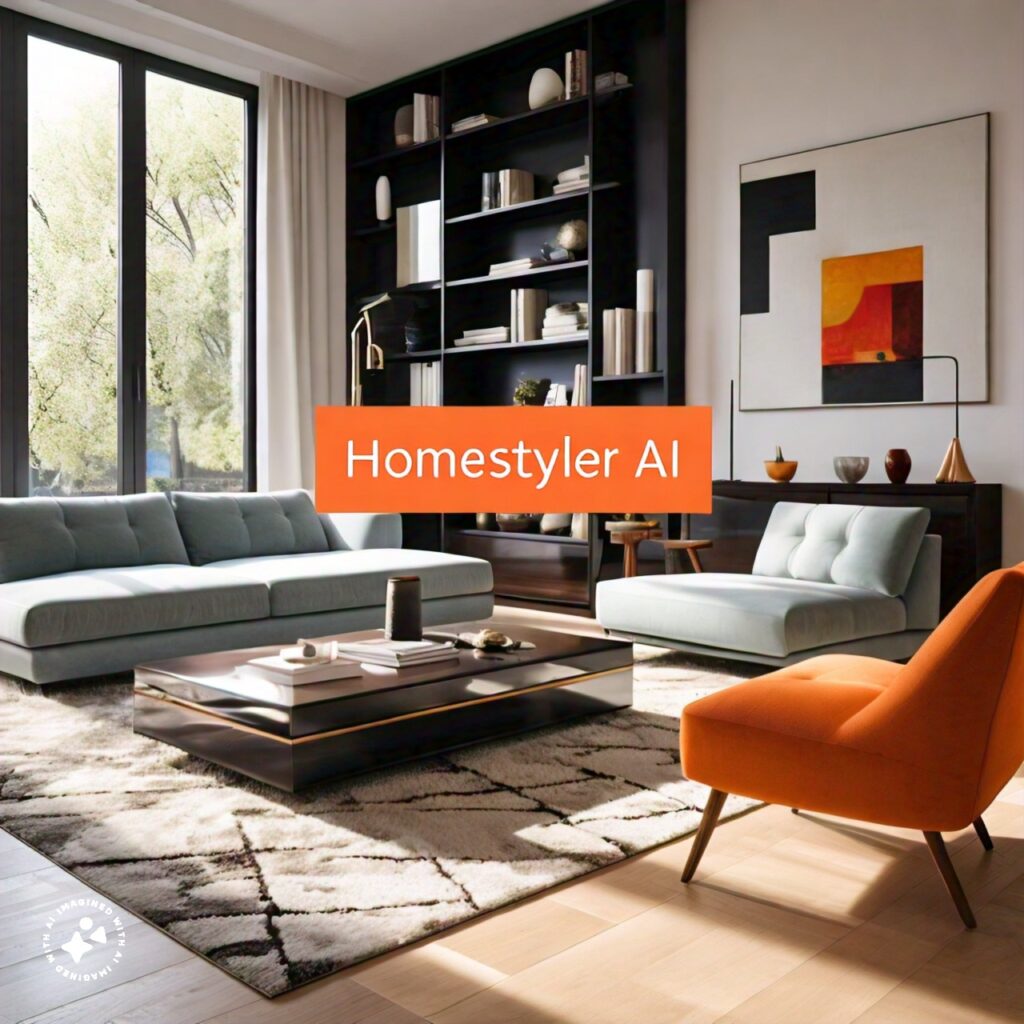AI-powered lifestyle design tools for home planning: Revolutionizing the Way You Design Your Living Space
Embark on a journey into the world of AI-powered lifestyle design tools for home planning, where innovation meets functionality to transform the way you envision your dream home. Prepare to discover a realm where cutting-edge technology and creativity converge to redefine the art of home planning.
Delve deeper into the realm of AI-powered tools as we explore their features, capabilities, user experience enhancements, personalization options, and seamless integration with smart home devices.
Introduction to AI-powered lifestyle design tools for home planning
AI-powered lifestyle design tools utilize artificial intelligence technology to assist individuals in planning and designing their homes according to their unique preferences and lifestyle needs. Home planning involves the process of creating a functional and aesthetically pleasing living space that reflects the personality and requirements of the occupants.
By integrating AI into lifestyle design tools, users can benefit from personalized recommendations, efficient space utilization, and innovative design solutions.
Benefits of using AI in lifestyle design tools for home planning
- Personalized Recommendations: AI algorithms analyze user inputs and preferences to offer customized design suggestions tailored to individual needs.
- Efficient Space Utilization: AI technology can optimize room layouts and furniture arrangements to maximize the functionality of living spaces.
- Innovative Design Solutions: AI-powered tools can generate creative design ideas and solutions that may not have been considered otherwise, enhancing the overall aesthetics of the home.
- Time and Cost Savings: By streamlining the design process and providing quick solutions, AI-powered tools can save users time and money in the home planning phase.
Features and capabilities of AI-powered lifestyle design tools

AI-powered lifestyle design tools offer a wide range of features and capabilities that enhance the user experience in home planning. These tools utilize artificial intelligence to provide personalized recommendations, streamline the design process, and optimize space utilization. Here are some common features found in AI-powered lifestyle design tools and how AI enhances the user experience in home planning:
Personalized Recommendations
AI-powered lifestyle design tools can analyze user preferences, lifestyle habits, and design trends to offer personalized recommendations for furniture, color schemes, layouts, and decor. By understanding the user’s unique style and requirements, AI can suggest design choices that align with their preferences, making the home planning process more efficient and tailored to individual needs.
Streamlined Design Process
AI-powered tools can automate repetitive tasks, such as measuring spaces, generating floor plans, and arranging furniture. This streamlines the design process and allows users to focus on creative aspects of home planning. AI algorithms can quickly generate multiple design options based on user input, saving time and effort in exploring different layouts and configurations.
Space Optimization
AI capabilities like spatial analysis and 3D modeling can help users visualize how furniture and decor will fit in their space. By simulating different layouts and arrangements, AI-powered tools can optimize space utilization and prevent costly mistakes in furniture placement.
Users can experiment with various design ideas virtually before making final decisions, ensuring that their space is both functional and aesthetically pleasing.Overall, AI-powered lifestyle design tools revolutionize the home planning experience by offering personalized recommendations, streamlining the design process, and optimizing space utilization.
These tools empower users to create their dream homes efficiently and effectively, with the support of artificial intelligence technology.
User experience and interface design
AI-powered lifestyle design tools have revolutionized the way people plan and design their homes. One of the key areas where AI has significantly enhanced user experience is through its ability to provide personalized recommendations and suggestions based on user preferences and requirements.
This level of customization ensures that users are able to create spaces that truly reflect their individual style and needs.
Improving user experience with AI
AI algorithms analyze vast amounts of data to understand user behavior and preferences, allowing the tools to make tailored suggestions for furniture placement, color schemes, and overall layout. This personalized approach not only saves time but also helps users make informed decisions that align with their vision for their living space.
- AI-powered tools can generate 3D visualizations of design ideas, giving users a realistic preview of how their space will look after implementation.
- Machine learning algorithms can learn from user feedback and continuously improve the recommendations provided, leading to a more intuitive and user-friendly experience over time.
- By automating repetitive tasks such as measuring dimensions or calculating optimal furniture arrangements, AI streamlines the planning process and reduces the margin for error.
Role of interface design in user-friendly AI tools
Interface design plays a crucial role in making AI-powered home planning tools accessible and intuitive for users. A well-designed interface should prioritize simplicity, clarity, and ease of navigation to ensure that users can easily interact with the tool and understand the recommendations being made.
- Clear and concise labeling of features and options helps users understand the purpose and functionality of each tool within the interface.
- Intuitive design elements such as drag-and-drop functionality or interactive menus make it easy for users to customize their designs without needing prior technical knowledge.
- Visual cues and feedback mechanisms guide users through the design process, providing reassurance and clarity at each step.
Best practices for designing interfaces in AI-powered home planning tools
When designing interfaces for AI-powered home planning tools, it is important to focus on creating a seamless and engaging user experience that empowers users to bring their design ideas to life.
- Utilize a clean and minimalist design aesthetic to reduce visual clutter and enhance focus on the design elements.
- Implement responsive design principles to ensure that the tool is accessible and functional across various devices and screen sizes.
- Offer customization options within the interface settings, allowing users to adjust the layout and features based on their personal preferences.
Personalization and customization options

Personalization and customization options play a crucial role in AI-powered lifestyle design tools for home planning. These features allow users to tailor their experience according to their preferences and needs, making the design process more efficient and personalized.
AI-enabled Personalization
AI enables personalization in home planning tools by leveraging user data and preferences to provide tailored recommendations and suggestions. By analyzing user behavior and choices, AI algorithms can predict design preferences and offer personalized solutions. For example, AI can suggest furniture layouts based on room dimensions and user style preferences, creating a customized design plan for each individual.
Importance of Customization Options
Customization options in AI-powered tools are essential as they empower users to create unique and personalized designs that reflect their individual style and preferences. These options allow users to experiment with different layouts, colors, and furniture arrangements until they find the perfect design that meets their needs.
The ability to customize every aspect of the home planning process ensures that users are fully satisfied with the end result.
Examples of Tailoring Home Planning Experience with AI
- Users can input their preferred color schemes, furniture styles, and room layouts into the AI tool to generate design recommendations that align with their taste.
- AI can analyze user feedback on design proposals and adapt future suggestions to better match the user’s preferences.
- Personalized mood boards and design inspiration galleries can be created based on user input, helping users visualize their ideal home design.
Integration with smart home devices
AI-powered lifestyle design tools offer seamless integration with smart home devices, revolutionizing the way we plan and design our living spaces. By connecting AI tools with smart home technology, users can experience a whole new level of convenience and efficiency in home planning.
Enhanced functionality through integration
AI-powered lifestyle design tools can communicate with smart home devices such as thermostats, lighting systems, security cameras, and more. This integration allows users to control various aspects of their home environment directly from the design tool interface. For example, users can adjust the lighting settings, temperature, or even check security camera feeds without leaving the app.
This level of control and connectivity enhances the overall user experience and streamlines the home planning process.
- Adjusting lighting and ambiance based on design choices
- Setting and controlling the temperature for each room
- Integrating security camera feeds to visualize potential blind spots
Real-world examples
Imagine selecting a color scheme for your living room using an AI-powered design tool and instantly seeing how it affects the lighting ambiance through connected smart bulbs. You can visualize the room with different lighting scenarios before making a final decision.
Additionally, integrating smart thermostats allows you to adjust the temperature settings based on your design preferences, ensuring a comfortable and energy-efficient home environment. This real-time feedback and control make the home planning process more interactive and personalized, ultimately leading to a more tailored living space.
End of Discussion

In conclusion, AI-powered lifestyle design tools offer a new horizon of possibilities for creating your ideal living space. With the blend of artificial intelligence and design, the future of home planning is brighter and more personalized than ever before. Dive into this dynamic world and let your imagination shape the home of your dreams with AI-powered tools at your fingertips.
Helpful Answers
How does AI enhance user experience in home planning tools?
AI streamlines the design process, offers personalized suggestions, and optimizes layouts based on user preferences, making the entire experience more efficient and user-friendly.
Why is personalization important in AI-powered tools?
Personalization ensures that users can tailor their home planning experience to their unique needs and preferences, resulting in designs that truly reflect their individual style and requirements.
Can AI-powered lifestyle tools integrate with existing smart home devices?
Yes, AI-powered tools can seamlessly integrate with smart home devices to create a cohesive ecosystem where design and technology work hand in hand to enhance the functionality and convenience of home planning.